Inside America’s spookiest homes: Haunting images show properties packed with baby skeletons, ‘pickled’ brains and electric chairs
‘This house has a good foundation.’
Never has this been more true than in the homes of the families featured in Paul Gambino’s astonishing new book, The art of gothic living.
His lavish photographs showcase a number of creepy set choices that would be better suited to a horror film, from vintage Ouija boards to cabinets full of skulls, Victorian taxidermy animals and even an antique electric chair.
These homes belong to a growing community of people he calls “Modern Gothics,” whose fashion and decorating choices push the boundaries of style and redefine what is considered beautiful.
Not everyone will agree with that.
An extremely rare Victorian fetal skeleton in Regina and Ryan Cohn’s Connecticut home
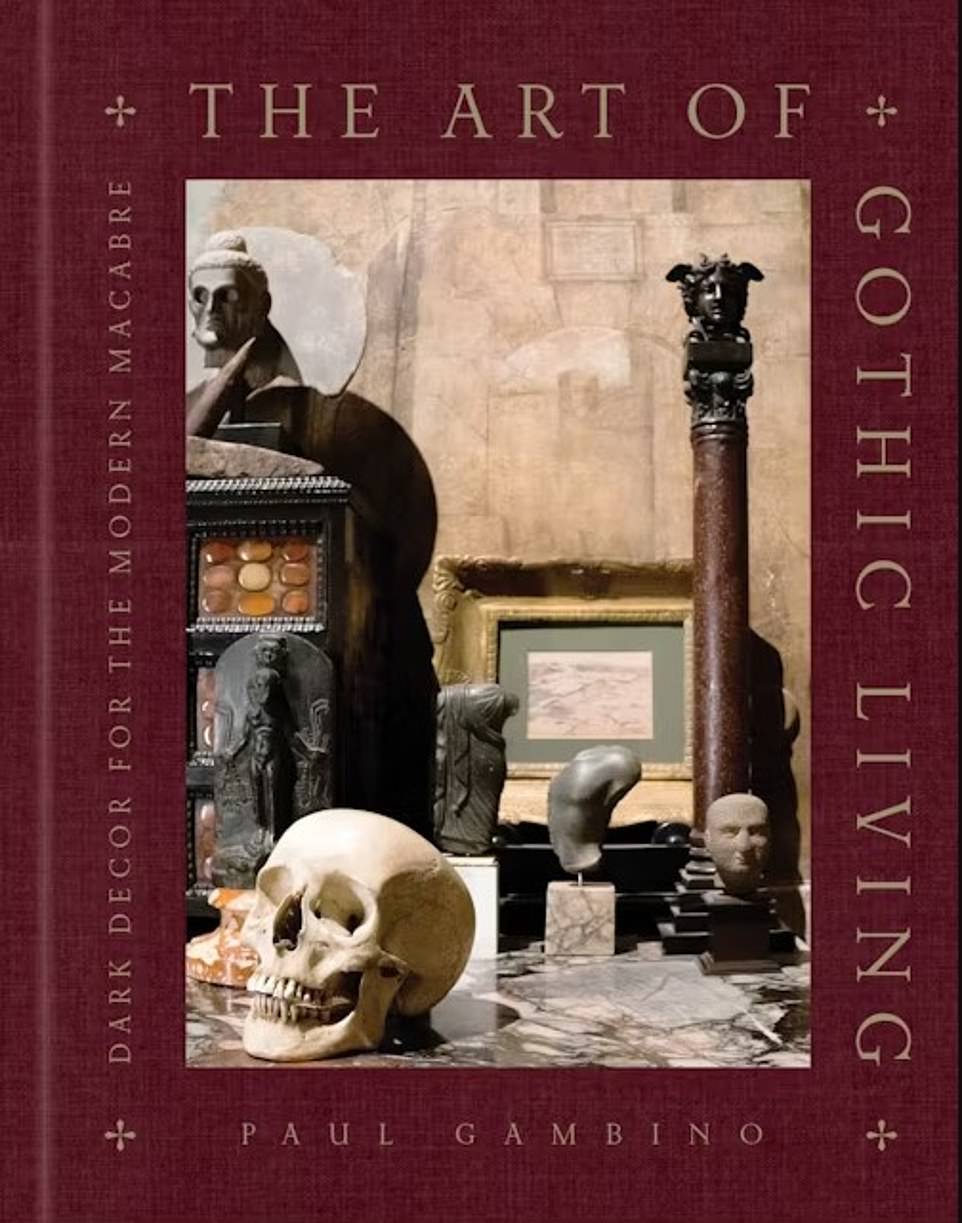
Paul Gambino’s new book, titled The Art of Gothic Living, features lavish photographs that reveal some creepy set choices that would be more at home in a horror film
“So, who and what is Modern Gothic?” he writes.
‘The mentality of a “Goth” has existed for generations. Images of the original Bauhaus art students in Germany around 1927 could easily be mistaken for a photograph taken on the King’s Road in London in 1981.
‘For the next two decades, the music produced in this scene reflected the sobering realization that life is fragile, that sadness always triumphs over happiness, and that physical and mental pain are an inevitable part of life. And yet, despite these bleak prospects, life is worth living because your favorite band is playing this weekend.’
Modern Gothic decor, then, is the physical manifestation of this mindset, he explains. And it can include everything from dark velvet curtains to vintage religious iconography, as well as human or animal bones and taxidermy to antique medical devices.
James Freeman and Kate Fugate in South Georgia
“We wanted to focus on unique pieces with historical relevance,” says James Freeman of the slightly unconventional decorating choices he and his partner Kate Fugate made.
Their most recent acquisition, for example, is a massive, 12-foot-tall sideshow banner that covers the ceiling of their entire living room. Originally from the World of Wonders “freak show” tour, whose roots go back to the 1940s, the centerpiece features a baby with two heads.
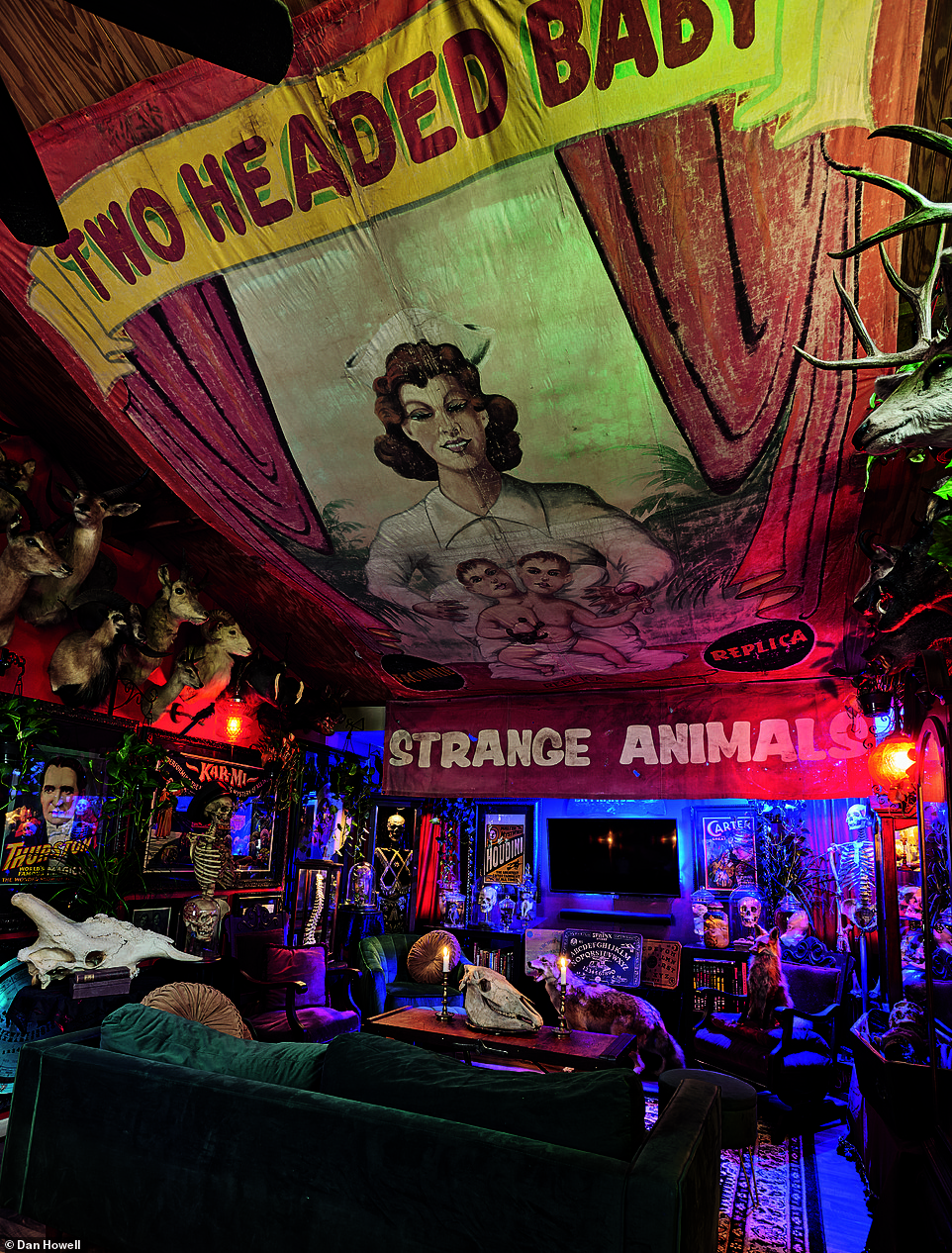
The living room of James Freeman and Kate Fugate’s Georgia home is dominated by a banner from an old carnival featuring a baby with two heads
“The banner was being used for an exhibit of wet Siamese twins,” James explains. “Unfortunately, someone took offense to the display of the babies and the exhibitors were arrested and forced to give the specimen a ‘Christian’ burial.”
Another highlight is their ‘Seance Room’, complete with mounted animal heads, an original ‘spirit trumpet’ to amplify the voices of the dead and a very rare ‘automatic writing planchette’ from the 1890s, which was used to communicate with spirits.
James emphasizes, however, that although he collects everything that has to do with contact with the undead. As an atheist, he does not believe in ghosts.
Kate is less sure. “I would love to have a cozy ghost to share our home with,” she says.
Richard Marini in Rockland County, New York
A vast collection of human skulls and pristine skeletons adorn the small apartment that once served as a garage and woodworking space for a local artist and is now the rental home of Richard Marini.
One of Richard’s favorite pieces is the skull of a five-year-old child, “with the teeth exposed and the adult teeth yet to come through,” he enthuses.
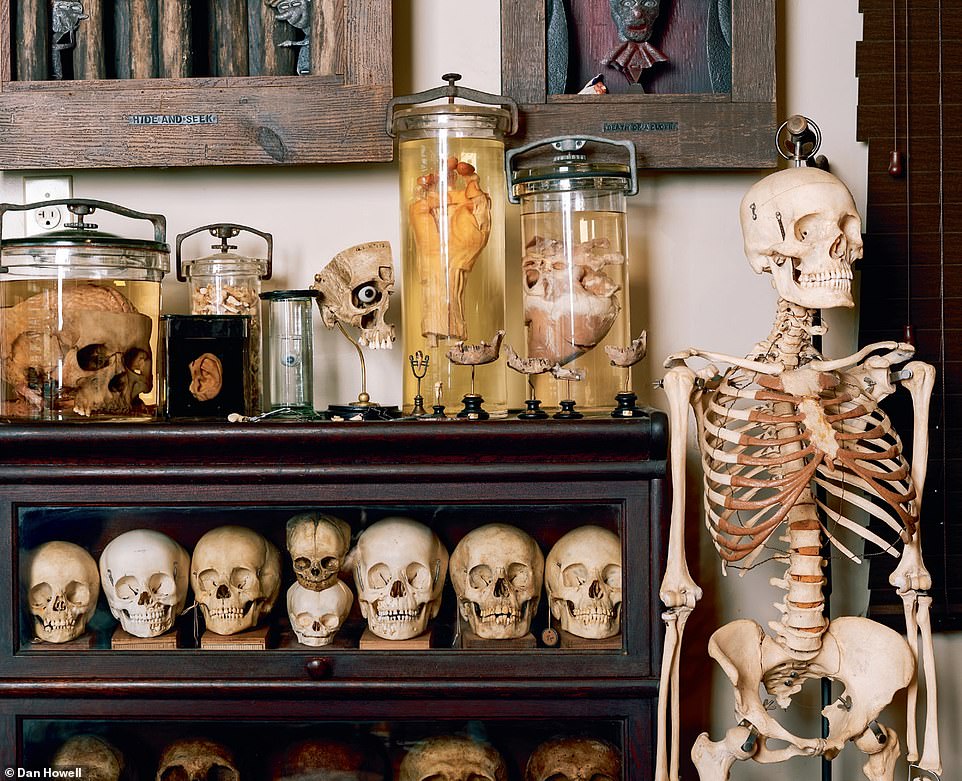
A lawyer’s bookcase contains 25 skulls, plus wet specimens in jars – including a brain with a complete spinal cord, an eyeball and a dissected brain
Other particularly grim items include vintage photographs of medical students admiring their dissected corpses, and several “wet” specimens, including his absolute favorite: a complete head that came from the collection of a retired doctor.
‘The fetus of a cat being dissected to show the organs and the cat’s head also being dissected would also fall into that category.’
Richard’s day job is a far cry from his macabre collection—he works as a purchasing manager for a local heating and air conditioning company. But his coworkers are more amused than creeped out.
“When there’s a box on my desk, it’s not uncommon for one of my coworkers to remark, ‘Hey, is there a skull in there?’”
Regina and Ryan Cohn in Connecticut
Regina and Ryan Cohn, once a power couple in New York’s oddities community, have built their vast collection over decades, which includes some of the most rare and highly sought-after pieces.
This includes a life-size Santos crucifix from Spain from the 18th century, complete with glass eyes and a visible rib cage made of human ribs. The crucifix hangs in their stairwell.
They also own a rare Victorian-era fetal skeleton, once on display at a medical college.
Friends who have stayed in the guest room are convinced they heard banging during the night and that the house is haunted, but Ryan remains calm.
“We don’t know,” he says. “Regina and I feel very comfortable in this house. We feel safe here.
“I’ve heard some weird stuff, but it’s an old house, and old houses make weird noises. But, damn it, if it was haunted, I wouldn’t move. I’d charge an entrance fee to come visit us.”
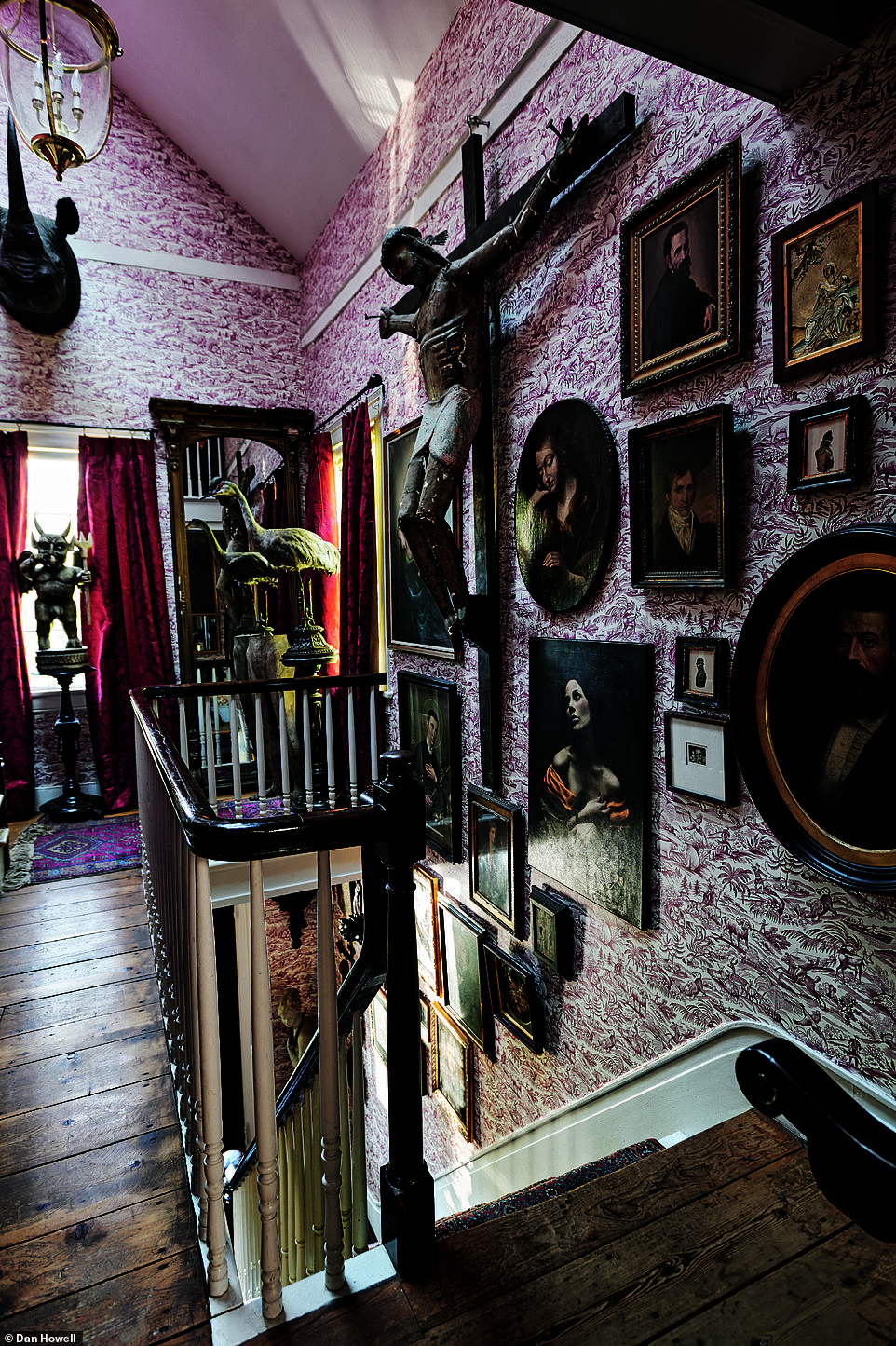
A life-size 18th-century crucifix from Spain features glass eyes and a visible rib cage made from human ribs
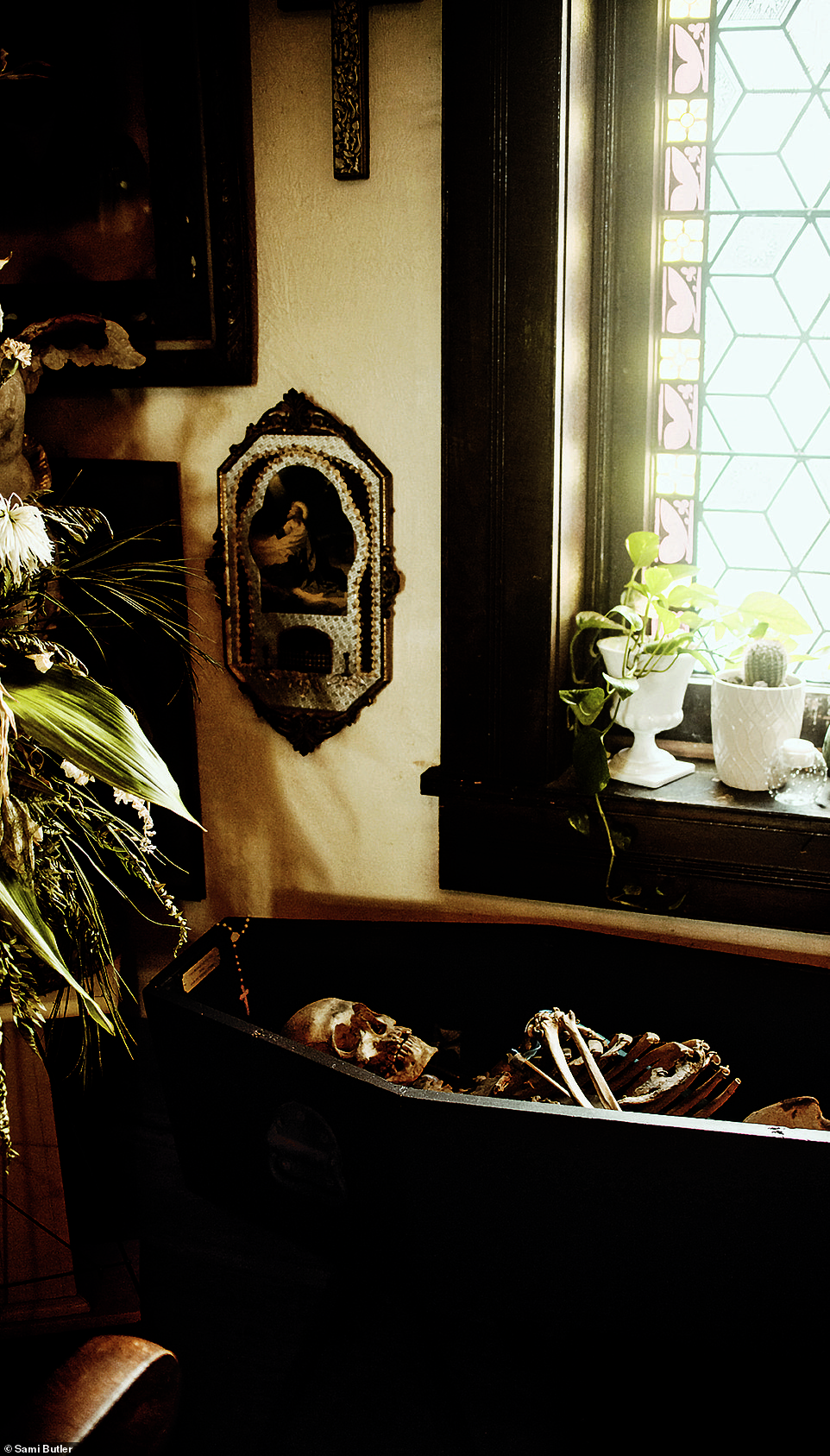
‘Rosie’ lies peacefully in a coffin near one of the church’s stained glass windows. Bridgett believes she materialized shortly after her arrival
Bridgett Johnson and Dave Moscato in Western Ohio
Bridgett Johnson and Dave Moscato live, fittingly for a couple who love Gothic decor, in a converted 1880s church, complete with its own cemetery across the street.
Bridgett loves chatting with the residents buried there: “If they feel anxious and want to talk, they answer,” she says.
And her aesthetic choices reflect that same fascination with the dead – in the form of a vast collection of beloved, deceased relatives.
“They say, ‘I don’t have room for my great-uncle John or my spinster aunt Grace, but I know you’ll hang them on your wall.’ And I do,” she says.
But the centerpiece of the couple’s home is the centuries-old skeleton of a woman they call “Rosie.” She lies peacefully in a coffin near one of the church’s stained-glass windows, and Bridgett believes she materialized shortly after arriving at the church.
The couple had been away for two weeks and when they returned, she came in and found the piano playing by itself.
“I ran out of the house and it took me hours to get the courage to walk back in,” she says.
Andrew Delaney in Victoria, Australia
An antique electric chair stands proudly in the foyer of Andrew Delaney’s home. Once a warehouse/tattoo parlor/gamers’ space, very little has changed – from the original 1960s vinyl flooring to the exposed ceiling infrastructure.
“The exposed brick really adds warmth and character,” says Andrew. “I painted the two end walls, the window sills and some of the ceiling pipes black. That’s about it.”
What makes his house special, however, is the collection of gruesome finds that tie in with his love for “social objects dedicated to mourning and death.” He finds these finds in thrift stores, furniture stores and curiosity shops.
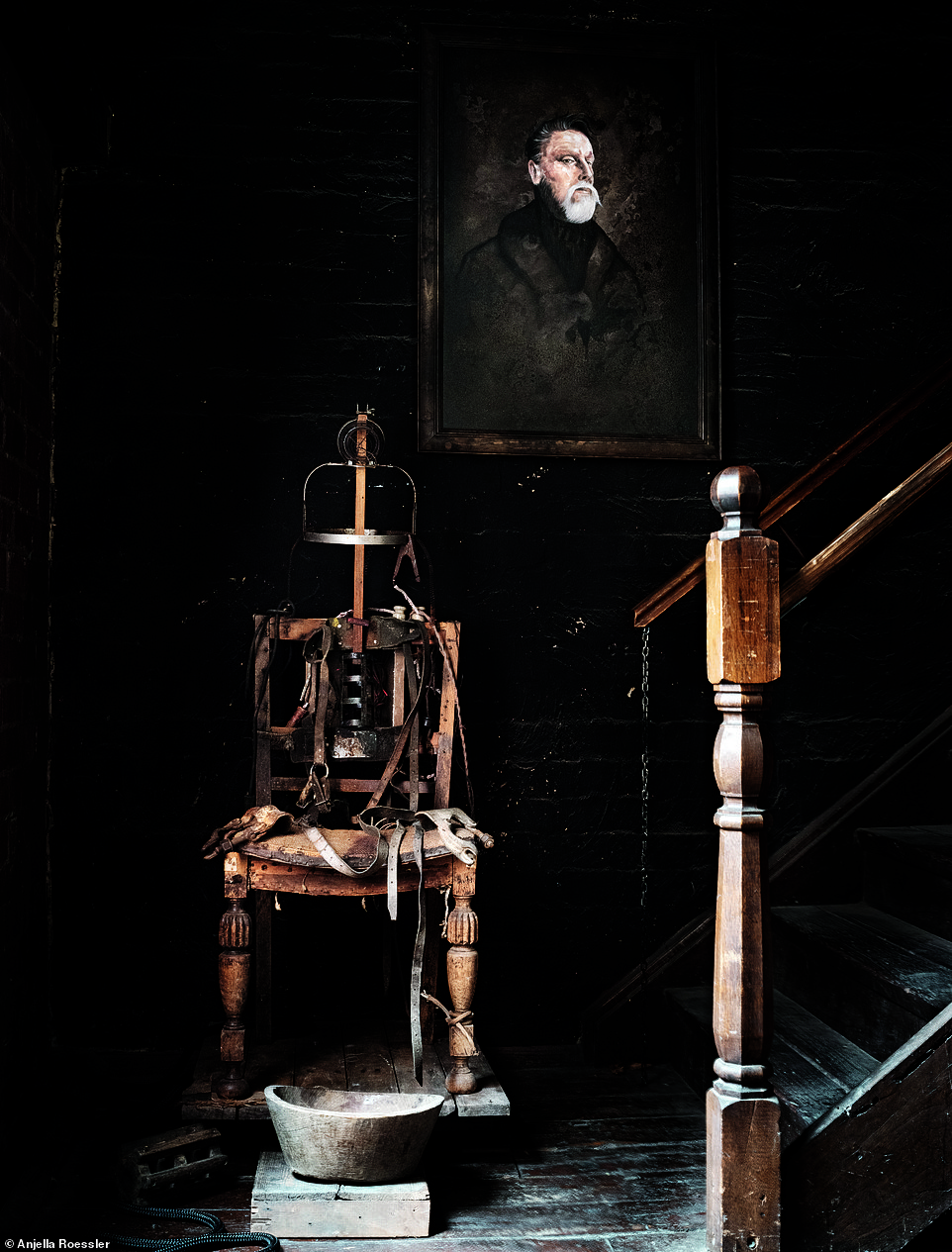
An antique electric chair is part of Andrew’s collection of ‘brutal-looking medical items’
‘I am… fascinated by items that have to do with human anatomy. However, I prefer vintage medical items that look brutal to real human body parts… If the piece has an interesting history or can blow someone’s mind, it may find its way into my home.
‘Although, he adds, “if I lived in a haunted place, it would depend on what kind of things were happening. I’d be fine with the milk going bad before its expiration date or things moving around the house. But if I was being groped while I was sleeping or I saw my face peeling in the bathroom mirror, that would be a different story.”
Images taken with permission from Art of Gothic Life: Dark backdrop for the modern macabre © 2024 Paul Gambino, published by Union Square & Co
